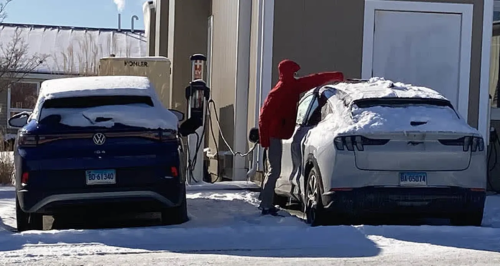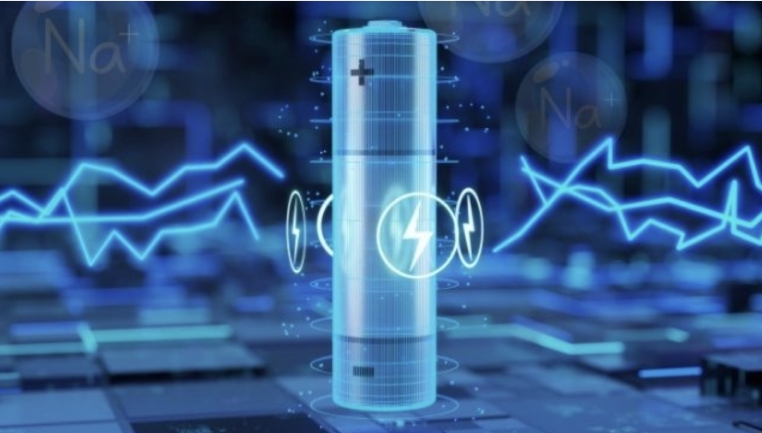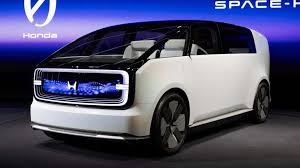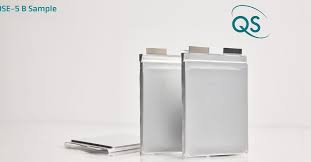Each car was tested in the exact same manner by the same drivers, driven in a caravan on three different days: a frigid one, a mild one, and a warm one. The team found that cold weather saps about 25% of range when cruising at 70 mph compared with the same conditions in mild weather. In the past, CR testers found that short trips in the cold with frequent stops and the need to reheat the cabin saps 50% of the range.
Unlike a gas car, where the heat is free, coming from the engine, an EV has to produce cabin heat and manage an optimal battery temperature with energy that comes from the battery, in turn reducing range.
CR expected that mild weather in the low 60s would provide the greatest range, but found instead that 80° F temp provided the longest range of the three tested conditions.
This test shows that EV range isn’t an absolute metric. Weather, hills, speed, traffic, cargo, passengers, and climate settings have an impact. That said, this ongoing experiment provides key insights into the role weather plays with range, CR said.

Preparing for winter EV range test - Volkswagen ID.4 and Ford Mustang Mach-E Clearing off the Volkswagen ID.4 and Ford Mustang Mach-E for testing. Photo: Gabe Shenhar/Consumer Reports
CR said that its test series underscores the importance of taking range claims as general guides and being mindful of the “moving target” nature of EV range. Another difference between ICE cars and EVs is that during constant cruising, an ICE car attains its best fuel economy. An EV, on the other hand, isn’t at its optimal efficiency when cruising on the highway, with limited opportunity to benefit from regenerative braking—energy that’s recouped from braking and coasting that gets directed back into the battery. Because the Environmental Protection Agency (EPA) range is based on a mix of city and highway driving, the expectation for a test like this is that the vehicles will underperform their rated range at a constant highway speed.
CR found a clear trend among these models showing that under different seasonal temperatures, winter cold results in the shortest range, followed by mild temperatures. It was on a typical summer day of sunny, humid, mid-80-degree weather that CR saw the longest range, despite using air conditioning.
Other findings showed that the Mustang Mach-E stood out for having the most accurate range prediction—the indicated range used vs. the actual miles driven. Its real-world range also came within 1 or 2 miles of the Model Y on every run, even though the Model Y has a higher official EPA range. Note that the Mach-E has the largest battery of the bunch, at 88 kWh of usable capacity.
The Ioniq 5’s cold-weather range ended up being only 3 miles short of the Model Y’s—but the Ioniq 5 is almost 200 pounds heavier than the Tesla. The Model Y is the lightest vehicle of the quartet, differing by more than 500 pounds from the ID.4, which is the heaviest. Of the mild and warm runs CR did with the Ioniq 5, it came the closest to its EPA rating. The Mach-E and ID.4 exceeded their EPA rating on the warm day.
Testing began in frigid February 2022, repeating the procedure in balmy April and in August heat. Originally, CR tested only the trio from Ford, Tesla, and VW in the winter of 2022. CR since closed the loop and ran the Hyundai Ioniq 5 on a day that was 17° F (-8 Celsius) on the same route under the same conditions. Like the other three EVs, it followed the familiar trend, showing a remarkably similar 25% loss of range compared with the mild weather run.
The EVs were fully charged overnight before each of the runs and were allowed to precondition the cabin to 72° F while still plugged in outdoors. At the same time, CR checked and verified the tire pressure. Heated and cooled seats weren’t used.
On the cold day, the temperature averaged 16° F (-8° C), meaning that considerable energy was needed to keep the cabin comfy and the battery pack in its ideal operating condition. The mild spring day was 65° F (18° C) during most of the drive, and the warm summer day was 85° F (29° C) during the drive. Each test day was clear and sunny.
The cars were taken on the road concurrently and driven on the same 142-mile round-trip route of Connecticut Route 2 and I-91. CR used adaptive cruise control set to 70 mph and the widest gap to prevent any aerodynamic trailing effect or sudden decelerations and accelerations due to surrounding traffic. The regenerative braking mode was set to its lowest setting for each car to level the playing field. CR paused for 10 minutes with the cars off at the midpoint.
Once back at the Auto Test Center, CR engineers didn’t just record the remaining range indicated in the cars. They applied the ratio of miles of range used vs. miles driven throughout the trip to extrapolate what would be the total range for that specific trip. CR also checked that ratio against the miles driven per each percent of state of charge (SOC) as extra validation of the methodology.







